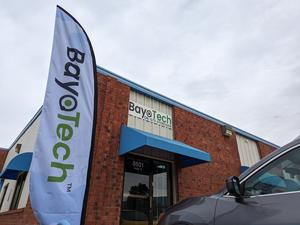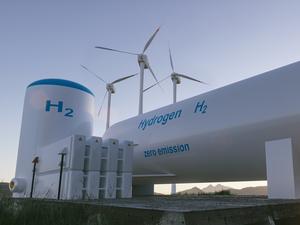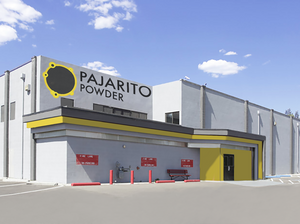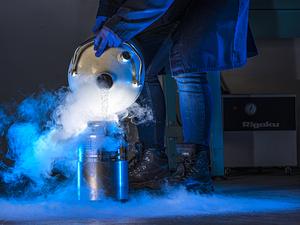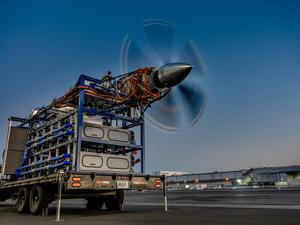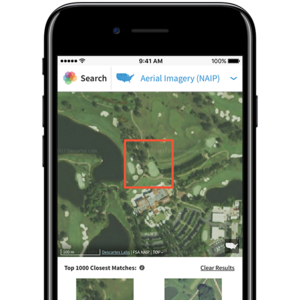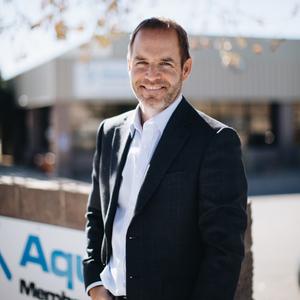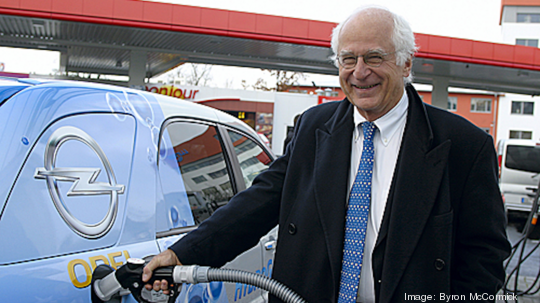
What needs to happen for people to call you 'the father of the modern fuel cell'? First, you need Saudi Arabia to lead an oil embargo against your home country.
Byron McCormick, as a graduate student at the University of Arizona, saw the consequences of that 1973 embargo and started to ask questions.
"Over lunch with one of my professors, I said, 'Damn, we just sent somebody to the Moon, why can't we figure this out?'" McCormick said.
McCormick had never been to New Mexico and "didn't know anything" about energy research when he joined Los Alamos National Laboratory in 1973. It was the first step in a career that would take him from the Pacific Coast to D.C. and across the Atlantic to Germany.
Ultimately, McCormick headed up General Motors' efforts to power cars using something other than traditional petroleum-based fossil fuels.
"I kept thinking that there's a better way," he said. "If we're going to solve this problem, we've got to kick out fossil fuels, we've got to get off it or at least do something different."
For McCormick, that "something different" turned out to be using fuel cells for transportation.
Fuel cells, as he described, keep reactants outside rather than inside. "Therefore, the fuel cell provides power and the tank of fuel provides energy," McCormick said. "You separate the two."
It was a unique approach to powering vehicles at the time, in the late '70s and early '80s. His team at Los Alamos "called everyone" to figure out the best way to implement fuel cells in vehicles. They eventually found a concept using polymer membranes to develop and make viable.
"When people say I'm the father of modern fuel cells, that's where that name came from," McCormick said. "It was a team effort. I just happened to ask the questions and kept being dogmatic about, 'Can we make this thing work?' Because it seemed like a good idea."
McCormick retired in 2008 but continues to consult with companies like Pajarito Powder. Albuquerque Business First recently spoke with the father of the modern fuel cell to learn more about how he got a start in the fuel cell industry, his approach to technology and what's pulled him to the Land of Enchantment.
The interview was edited for brevity and clarity.
Albuquerque Business First: How and why did you first become interested in energy and fuel cell technology? Why did that pull you?
Byron McCormick: It didn't. I was going to be a semiconductor and integrated circuit guy, except for the oil embargo. I just thought, 'We can solve this.' But I didn't see myself in that, I was just like 'God dang,' you know?
I think my professor gave a sales pitch. He was an interesting guy because he had degrees in meteorology, chemistry, physics and electrical engineering. He's kind of like me, you know, all over the map. For whatever reason, he had met Steve Depp [from Los Alamos National Laboratory] at a conference and thought he was really good. He kind of brokered the marriage.
Steve [Depp] was perfect. And the people I worked with [at Los Alamos] were perfect. He was a mentor, a brilliant and easygoing guy. We'd have these great discussions, like 'Byron, have you thought about that?' And then we'd go do it. That's how that worked.
So at [the University of Arizona], I didn't think about it other than that I knew there had to be technical solutions. I didn't see myself doing it. Then all of a sudden, I found myself at Los Alamos doing it.
Would you say that you have a problem-solving approach? Like there's a problem with this oil embargo that you identified, that you didn't know anything about and that you said 'I'm going to go work on.' Very much. That's me. I have a high boredom threshold. If I'm not a little bit in over my head then I'm probably not very good. If I really know what I'm doing then I know I'm not doing it good because I'll lose concentration.
I don't see the world in facts. So consequently from context, either by what people say or a few words from a sentence, I kind of skim and fill in the gaps.
If you ask me how I think as a dyslexic, and I've talked to some dyslexic people that I know, we tend to see connections to things. As I go places or I talk to people or I get into technology, whatever it is, my mind is connecting things.
This is where a lot of innovation happens. If you look at real innovators who take things to market, most of the time — like Steve Jobs — it's not deep innovation one way, it's connecting between silos where other people aren't connecting them. And for people like me that's a natural way to think, because I've kind of been connecting things all my life.
What do you think pulls you to New Mexico, in particular? Do you think there's a future for the hydrogen and fuel cell economy here? I thought about it and went ahead and accepted the job at Los Alamos [National Laboratory] because of the location, because of the beauty of learning New Mexico, because of the people I could work with, the talent up there and the 'I won't tell you what to do, go do something good' approach."
I've lived here in Los Alamos, I've lived in Santa Barbara, I've lived in the Detroit area, a couple of different places there. I've lived in Indianapolis and Frankfurt, Germany. And so the agreement I had with [my wife] is that, well, a lot of these places are pretty ugly in the wintertime.
We knew we were coming back here because this was the outdoors place. This is where we love, this is what we do. She drew a map and she said, 'Here's where I want to live.' And it was the national forest boundary about a mile deep, and she said, 'This is where I want to live.' So that's what we did. Basically, this was heaven for us.
Over the next three years, you're going to see further investment and growth in the electrolyzer business, in the green hydrogen business and in advanced fuel cell technologies. Besides the technology, there are things that have to be worked out for these things to happen as fast as they can. When we put in stations in California, our biggest problem wasn't putting in the stations or the cars, it was trying to get the zoning people to allow us to put hydrogen in. So, top for New Mexico is to make sure you knock down those barriers.
